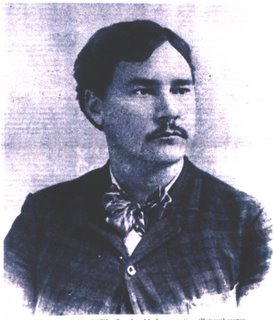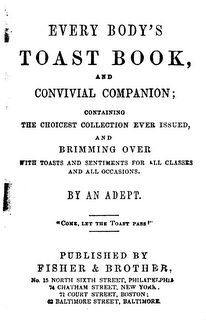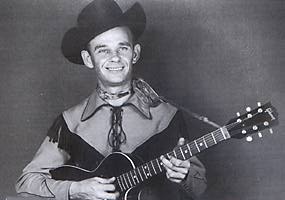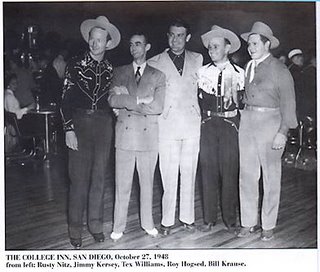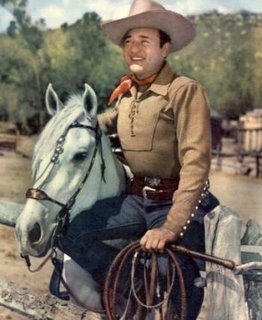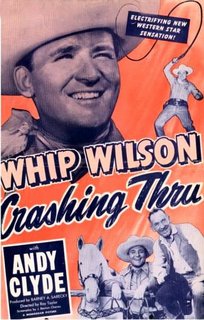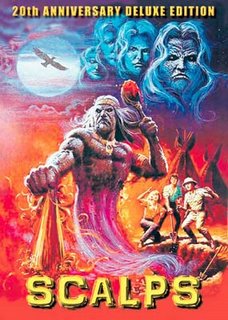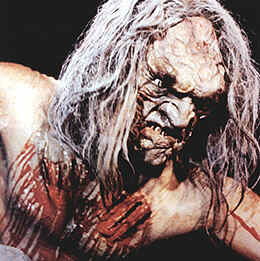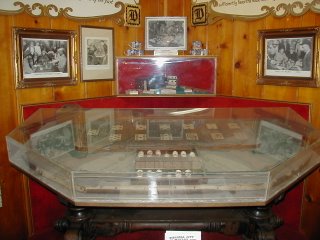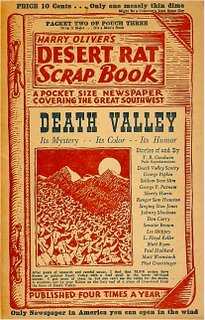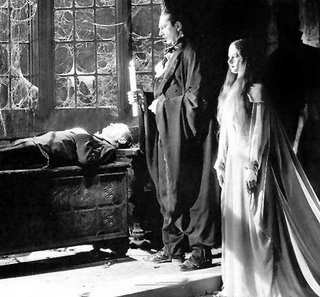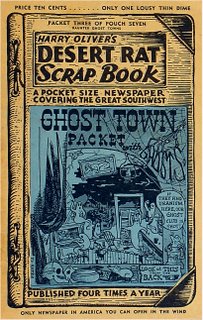
Abraham Lincoln & The Supernatural
One of the most fascinating characters in American history was undoubtedly President Abraham Lincoln. In addition to his many contributions to our history, connections between Lincoln and the supernatural were maintained throughout his life, and some say beyond it. Much has been made of Lincoln’s prophetic dreams and of his belief in the spirit world and of course, of the hauntings which are said to be connected to his home in Springfield and his mysterious tomb.
Did séances really take place in the Lincoln White House? Did Lincoln really believe in Spiritualism? And if so, what event occurred that could have caused him to want to make contact with the dead?
Lincoln IN ILLINOIS
Abraham Lincoln was always a melancholy person. The death of his mother when he was still a child, hard labor to make an existence for himself in the wilderness and his struggle for an education, all combined to make him a serious man. The Civil War caused him great sorrow and the heavy losses on both sides filled him with sadness. Lincoln paid obsessive detail to everything about the war and by 1864, portraits of him show a face etched with lines. He slept very little in those years and during the five years he lived in the White House, he spent less than one month away from work. His only escape was afforded him by the theater, a late night buggy ride or from his books.
Abraham Lincoln was born in Kentucky in 1809. His father, Thomas Lincoln, had married Nancy Hanks, a tall, pretty, uneducated girl, three years before and they had built a log cabin at a place called Sinking Springs Farm. Later, the Lincoln family pulled up stakes and moved across the Ohio River to Indiana, where they settled on Little Pigeon Creek. In 1818, Lincoln’s life changed abruptly when the family was struck by a terrible frontier disease dubbed "milk sickness". Tom and Betsy Sparrow, close friends of the Lincoln family, died first, while Nancy Lincoln faithfully nursed them to their last hours. Then, Nancy too was struck down with the disease and followed her friends to their graves. Abraham helped to fashion his mother’s coffin with his own hands and then placed her in the ground. It was later said that he held his head in his hands and wept for hours. At that point, his father and sister forgotten, Lincoln later said that he felt completely alone in the world.
In 1820. the Lincoln's moved to Illinois. Thomas had re-married and for a time, the family lived in a small cabin outside of Decatur. The younger Lincoln later moved to New Salem and Springfield after working on the riverboats and serving in the military during
the Black Hawk War. He began working in a law practice and found that he had a gift for politics and oration. He was soon a popular young man about town. In 1839, Lincoln met a young woman named Mary Todd and after a rocky courtship, they were married in 1842.

Lincoln’s love for travel and the law caused his marriage to suffer badly in those early years. At that point in his career, he was active in court cases all over Illinois and was constantly away from home. Mary gave birth to a son, Robert, and their second son, Eddie, was born in 1846 but only lived to the age of four. Willie followed in 1850, not long after the death of his brother, and Thomas "Tad" Lincoln was born in 1853.
Lincoln served a term in Congress in the late 1840’s, but his law practice kept him too busy to consider much of a political career. He had always been opposed to the further spread of slavery in the country and was contented that the Missouri Compromise had outlawed slavery further west, where America’s future would be built. But in 1854, a congressional act provoked by Lincoln’s long-time personal and political rival, Stephen Douglas, threatened to allow slavery in the territories. Lincoln’s anger at this got the best of him and he made the decision to return to politics.
Lincoln’s Prophetic Vision
In the summer of 1854, Lincoln decided to campaign for a seat in the Illinois State Assembly. He easily won the position, but then quickly resigned. What he really wanted was a seat in the US Senate, where he believed he could really make a difference for his country. In February 1855, he sought but failed to get the coveted seat. Things started to change in early 1856 however, as a new political party was created called the Republican Party. In these years, passions were beginning to ignite in the nation and dire predictions began to be made about the possibilities of secession and Civil War. In Illinois, Republicans nominated Lincoln to run against Stephen Douglas for a seat in the Senate in 1858.
On July 24, Lincoln proposed that the two opponents meet in a
series of debates before audiences all over the state. Douglas agreed and the two began a series of appearances that have become legend in Illinois for their volatile content. "The prairies are on fire," wrote one reporter, after witnessing a clash between Lincoln and Douglas. The debates were bitter and powerful between the two long-time rivals. Lincoln argued that slavery must be abolished, while Douglas insisted that it could be contained and allowed to flourish in the South, as long as the states there wished it. The final debate was held in Alton and the story was reported all over the country in newspapers.

Finally, in November, word reached Lincoln that he had lost the race for the Senate seat. Surprisingly, this loss was the best thing that could have happened to him. Wise political analysts, on both sides, had watched this race very closely and had seen the way the debates had captured the attention of the entire country. Soon, word among the Republicans began to favor Lincoln as their choice for President in 1860.
Lincoln began to travel all over the country, backed by the Illinois Republican contingent, making his name known and becoming a recognizable entity. On May 16, 1860, the Republican National Convention opened in Chicago and ended with a presidential nomination for Lincoln. The city of Springfield had a carnival-like atmosphere about it that summer, highlighted with a Republican rally at the fairgrounds. The parade took more than eight hours to pass the Lincoln home and ended with a picnic, where tubs of lemonade and whole cooked steers awaited the revelers.
Election Day in the city dawned with rousing blasts from a cannon, with music and contagious excitement. Lincoln spent the day and evening with friends at a telegraph office. By midnight, it was clear that he had been elected President of the United States. A late night dinner was held in his honor and then he returned to the office for more news. Guns fired in celebration throughout the night. Lincoln may have won the day, but he fared poorly in the popular vote. He had soundly defeated his closest opponent in the Electoral College, but had won just forty percent of the vote among the people. He had become a minority president with no support at all in the southern states.
Lincoln finally managed to return home in the early morning hours although news of victory and telegrams of congratulations were still being wired to his office. He went into his bedroom for some much-needed rest and collapsed onto a settee. Near the couch was a large bureau with a mirror on it and Lincoln started for a moment at his reflection in the glass. His face appeared angular, thin and tired. Several of his friends suggested that he grow a beard, which would hide the narrowness of his face and give him a more "presidential" appearance. Lincoln pondered this for a moment and then experienced what many would term a "vision"... and odd vision that Lincoln would later believe had prophetic meaning.

He saw that in the mirror, his face appeared to have two separate, yet distinct, images. The tip of one nose was about three inches away from the other one. The vision vanished but appeared again a few moments later. It was clearer this time and Lincoln realized that one of the faces was actually much paler than the other was, almost with the coloring of death. The vision disappeared again and Lincoln dismissed the whole thing to the excitement of the hour and his lack of sleep.
Later on that evening, he told Mary of the strange vision and attempted to conjure it up again in the days that followed. The faces always returned to him and while Mary never saw it, she believed her husband when he said he did. She also believed she knew the significance of the vision. The healthy face was her husband’s "real" face and indicated that he would serve his first term as president. The pale, ghostly image of the second face however was a sign that he would be elected to a second term -- but would not live to see its conclusion.
Lincoln apparently dismissed the whole thing as a hallucination, or an imperfection in the glass, or so he said publicly. Later, that strange vision would come back to haunt him during the turbulent days of the war. It was not Lincoln’s only brush with prophecy either. One day, shortly before the election, he spoke to some friends as they were discussing the possibilities of Civil War. "Gentlemen," he said to them, "you may be surprised and think it strange, but when the doctor here was describing a war, I distinctly saw myself, in second sight, bearing an important part in that strife."
LINCOLN AND THE WAR
Lincoln was soon sworn in as President and began one of the most troubled periods of American history. The great loss of life and the bitter turmoil of the war took their toll on him. His personality changed and he became more bitter and dark. He became a sad, gloomy leader who was prone to severe depression. It was as if the weight of the entire nation had fallen on his shoulders.

Documents of the Union War Department contain one occasion when Lincoln burst into the telegraph office of the department late one night. He had visited earlier, looking for the latest news, but when he came back, he was in a panic. He ordered the operator to get a line through to the Union commanders. He was convinced that Confederate soldiers were just about to cut through the Federal lines. The telegraph operator asked where he had obtained such information and Lincoln reportedly answered, "My god, man! I saw it".
The war took a terrible toll on President Lincoln but there is no doubt that the most crippling blow he suffered in the White House was the death of his son, Willie, in 1862. The boy had been born in Springfield in 1850, shortly after the funeral of the Lincoln’s second son, Eddie. Willie was much like his father and probably because of this, was the special favorite among his much-loved sons. William Wallace Lincoln, named for a family doctor in Springfield, was a quiet, thoughtful boy who excelled at reading and education. His brother Tad was just the opposite and could not read or write by age 12, while Willie was beyond the basics by 8. He had a wonderful memory and could recite long passages from the Bible with ease. He often told his parents that he was going to be a minister when he grew up.
Lincoln and Mary grieved deeply over Willie’s death. Lincoln was sick at heart over Willie’s death and it was probably the most intense personal crisis in his life. Some historians have even called it the greatest blow he ever suffered. Even Confederate President Jefferson Davis expressed condolences over the boy’s death.
Lincoln did not fare well in the days that followed the boy's death. Willie had been embalmed to make the trip back to Springfield and be buried beside his brother, but Lincoln changed his mind about that at the last minute. He accepted an offer made to him by a friend, William Thomas Carroll, to place the body of Willie in one of the crypts in the Carroll family tomb. This would be until Lincoln retired from the presidency and returned to live in Springfield himself. He could not bear the idea of having Willie so far away from him just yet. In fact, Lincoln returned to the cemetery the next day to watch the body as it was moved from the cemetery chapel to the crypt itself. Word got out that Lincoln returned to the tomb on two occasions and had Willie’s coffin opened. The doctor had embalmed Willie so perfectly that he everyone said he just seemed to be sleeping. The President claimed that he was forced to look upon his boy’s face just one last time.
After the funeral, Lincoln tried to go on about his work, but his spirit had been crushed by Willie’s death. One week after the funeral, he closed himself up in his office all day and wept. It has often been said that Lincoln was on the verge of suicide at this point, but none can say for sure. He did withdraw even further into himself though and he began to look more closely at the spiritual matters that had interested him for so long.
LINCOLN & THE SPIRITUALISTS
Although many Lincoln scholars say otherwise, it is more than possible that Abraham Lincoln didn’t just believe in the supernatural, but that he actually participated in it. Many have scoffed and said that Lincoln had no time for ghosts and spirits, but there are others who say that he actually attended séances that were held in the White House. Whether he accepted the movement or not, it is a fact that many Spiritualists were often guests there. Several of them were even said to have given him warnings about the dark shadows that hung over his life.

Of course, Lincoln himself was convinced that he was doomed and adopted a very fatalistic attitude during his presidency, especially after Willie’s death. His friends stated that Lincoln would often watch the door while he worked, as if expecting the boy to run through it and give his father a hug, as he often did in life. Lincoln also began to speak of how Willie’s spirit remained with him and how his presence was often felt in his home and office. Some mediums theorized that Lincoln’s obsession with the boy’s death may have caused Willie’s spirit to linger behind, refusing, for his father’s sake, to pass on to the other side.
Regardless of how he felt about Willie’s spirit, Lincoln publicly avoided connections to the Washington spiritualists, so much of what is written about his contact with them comes through accounts and diaries written by friends and acquaintances.
While Lincoln avoided the spiritualists in public, Mary embraced them openly. She had been quick to turn to contact with the other side for comfort after Willie’s death. Once he was gone, Mary never again entered the White House guest room where he died or the room in which the funeral viewing was held. Some historians claim that this was the beginning of Mary’s mental instability, but not because of the mediums, because of her fervent grief instead. The obsession over Spiritualism was just one of the symptoms, but none could ignore the fact that her headaches, mood swings and bursts of irrational temper were growing worse.
Mary began meeting with a number of different Spiritualists and invited many to the White House, as each claimed to be able to "lift the thin veil" and allow Mary to communicate with Willie. Mary’s closest spiritualist companion, and one of whom there is some record that Lincoln also met with, was Nettie Colburn Maynard. Many are familiar with a tale told about a séance held by Nettie Maynard in 1863 where a grand piano levitated. The medium was playing the instrument when it began to rise off the floor. Lincoln and Colonel Simon Kase were both present and it is said that both men climbed onto the piano, only to have it jump and shake so hard that they climbed down. It is recorded that Lincoln would later refer to the levitation as proof of an "invisible power."
Rumors spread that Lincoln had an interest in the spirit world. In England, a piece of sheet music was published which portrayed him holding a candle while violins and tambourines flew about his head. The piece of music was called The Dark Séance Polka and the caption below the illustration of the president read "Abraham Lincoln and the Spiritualists".
It was also rumored that Lincoln consulted with these mediums and clairvoyants to obtain information about future events in the war. He found that sometimes they gave him information about matters as mundane as Confederate troop movements -- information that sometimes matched his own precognitive visions.
During a séance that was supposed to have been held at the home of a Mrs. Laurie in February 1863, a spirit come through Nettie Maynard who identified himself as Dr. Bamford. Lincoln was allegedly in attendance at this séance and listened as the spirit described the critical conditions of the Federal Army at the front lines. Lincoln replied that the spirit seemed to understand the situation and asked what he would do to remedy it. The spirit answered that he did -- but only if Lincoln had the courage to go through with it. Lincoln said that he did and asked for assistance.
The spirit told Lincoln that he should make an informal visit to the battle front, accompanied by Mrs. Lincoln, and that he should mingle with the men and hear their grievances and stories. This, said the spirit, would unite the men behind him. Lincoln followed his advice and managed to rally the troops behind the cause. By July of that year, the Union was dominating on both the western and eastern fronts with victories in Vicksburg and Gettysburg. The following of the spirit's advice was credited by many for beginning the turning point of the war.

THE FORESHADOWING OF DOOM
Despite these somewhat apocryphal stories, there is little doubt that Lincoln believed a dark cloud hung over his head. The constant threats of death and violence that he received kept he and his bodyguards on edge at all times. It is also believed that some of his spiritualist friends felt the end was near. During a session that he was said to have had with Nettie Maynard, she allegedly told him that "the shadows others have told of still hang over you." Lincoln told her that he received letters from spiritualists all over the country that warned him of impending doom. When she got ready to depart, the president insisted that she come and visit he and Mary the following autumn. "I shall come, of course," Nettie answered, "that is... if you are still among us."
One of Lincoln’s old friends from Illinois was a lawyer with whom he had ridden the legal circuit named Ward Hill Lamon. Lincoln had appointed him to a security position in the White House and he worried constantly over Lincoln’s seeming indifference to threats and warnings of death. Lamon often resigned his position because his friend did not take the danger seriously. Lincoln always convinced him to stay on, promising to be more careful.... as he vanished out of the White House at night, or attended the theater without protection.
Lamon became obsessed with watching over Lincoln and many believe that the president would not have been killed at Ford’s Theater had Lamon been on duty that night. As it turned out, the security chief happened to be in Richmond, Virginia, on an errand for the president, when disaster struck. He would never forgive himself for what happened -- especially since he believed that he had a forewarning of the event, from Lincoln himself.
Years later, Lamon would remember that Lincoln had always been haunted by the strange vision that he experienced in the mirror in 1860. Several years after that, it was to Lamon and Mary Lincoln to whom the president would recount an eerie dream of death, just shortly before his assassination.
"About ten days ago, I retired late. I soon began to dream. There seemed to be a death-like stillness about me. Then I heard subdued sobs, as if a number of people were weeping. I thought I left my bed and wandered downstairs. There the silence was broken by the same pitiful sobbing, but the mourners were invisible. I went from room to room; no living person was in sight, but the same mournful sounds of distress met me as I passed along.
"It was light in all the rooms; every object was familiar to me, but where were all the people who were grieving as if their hearts would break? I was puzzled and alarmed. What could be the meaning of all this? Determined to find the cause of a state of things so mysterious and so shocking, I kept on until I arrived at the East Room, which I entered. Before me was a catafalque, on which rested a corpse wrapped in funeral vestments. Around it were stationed soldiers who were acting as guards; and there was a throng of people, some gazing mournfully upon the corpse, whose face was covered, others weeping pitifully.

" ‘Who is dead in the White House?’, I demanded of one of the soldiers.
" ‘The President’, was his answer, ‘He was killed by an assassin.’
"Then came a loud burst of grief from the crowd, which awoke me from my dream. I slept no more that night; and although it was only a dream, I have been strangely annoyed by it ever since."
Lincoln was murdered just a few days later and his body was displayed in the East Room of the White House. Mary would recall this dream of her husband’s quite vividly in the days that followed. It was said that her first coherent word after the assassination was a muttered statement about his dream being prophetic.
On April 14, 1865, a few days after the horrifying dream and on the night he was to attend Ford’s Theater, Lincoln called a meeting of his cabinet. Edwin Stanton, Lincoln’s Secretary of War, arrived twenty minutes late and the meeting began without him. As Stanton and Attorney General James Speed were leaving the meeting, Stanton commented to him that he was pleased about how much work was accomplished.
"But you were not here at the beginning", Speed said. "When we entered the council chamber, we found the president seated at the top of the table, with his face buried in his hands. Presently, he raised it and we saw that he looked grave and worn".
" Gentlemen, before long, you will have important news", the President told them. The Cabinet members were anxious to hear what news Lincoln spoke of, but he refused to tell them anything further.

"I have heard nothing, but you will hear tomorrow, " he said, and then continued, "I have had a dream. I have dreamed three times before; once before the Battle of Bull Run; once on another occasion; and again last night. I am in a boat, alone on a boundless ocean. I have no oars, no rudder, I am helpless. I drift!"
That evening, while attending a performance of a play called Our American Cousin at Ford’s Theater, Lincoln was killed by an assassin named John Wilkes Booth. He died the next morning, April 15, the anniversary of the southern assault on Fort Sumter, the event which officially started the Civil War.
Lincoln spoke of death and prophecies to other members of his staff also, like Colonel William H. Crook, a member of the White House security team and one of Lincoln’s personal bodyguards. Crook took his task seriously, often staying awake at night and sitting outside Lincoln’s bedroom while the president slept. Crook even refused to read a newspaper while on duty so that he would be ready should an emergency arise.
Crook was on duty the evening of April 14 and that same afternoon, Lincoln spoke to him about the strange dreams that he had been having. Crook pleaded with the president not to go to the theater that night, but Lincoln dismissed his concerns, explaining that he had promised Mary they would go and that he needed a night away from the problems of the country. Crook then asked to accompany the president, but Lincoln again refused, insisting that Crook could not work around the clock.

Lincoln had a habit of bidding Crook a "good night" each evening as he left the office and went to his bedroom. On that fateful day, according to Crook, Lincoln paused as he left for the theater and turned to the bodyguard. "Good-bye, Crook," he said significantly.
"It was the first time that he neglected to say ‘Good Night’ to me", Crook would later recall. "And it was the only time that he ever said ‘Good-bye’. I thought of it at that moment and, a few hours later, when the news flashed over Washington that he had been shot, his last words were so burned into my being that they can never be forgotten."







